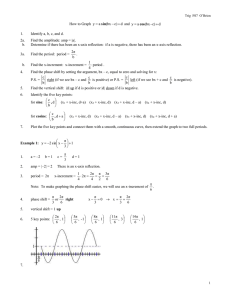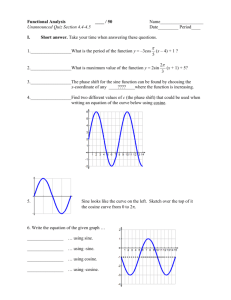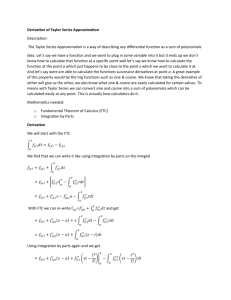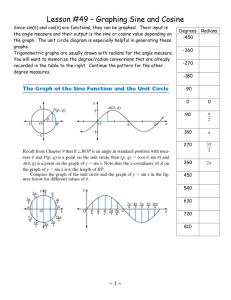How To Graph Cosecant and Secant F07
advertisement
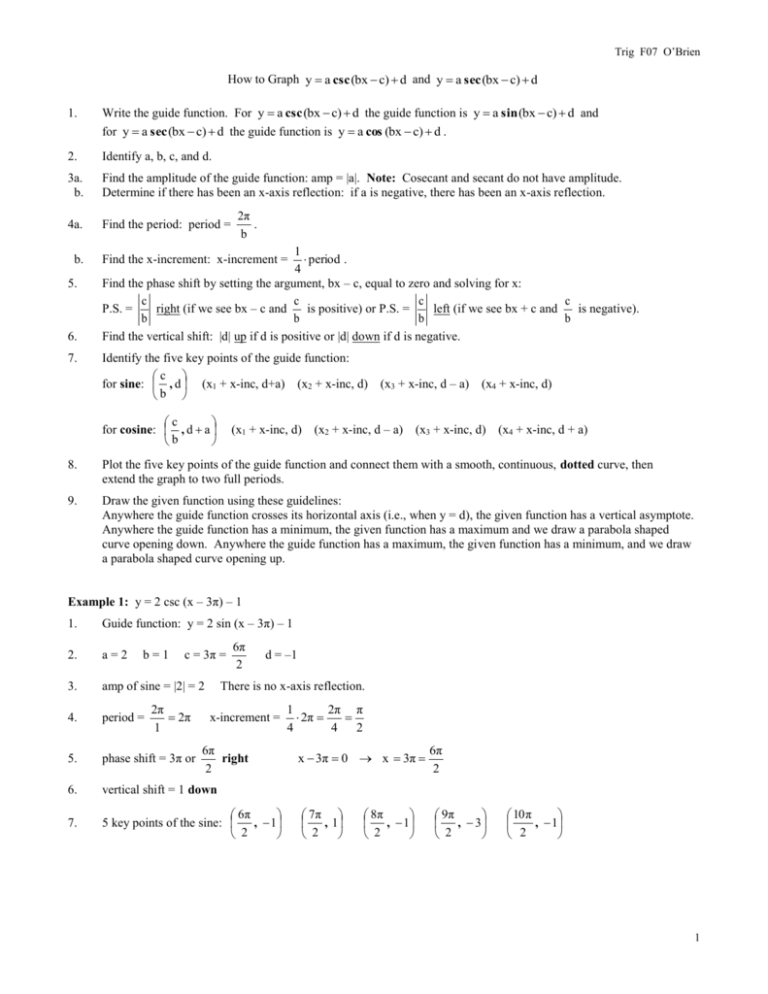
Trig F07 O’Brien How to Graph y a csc (bx c) d and y a sec (bx c) d 1. Write the guide function. For y a csc (bx c) d the guide function is y a sin (bx c) d and for y a sec (bx c) d the guide function is y a cos (bx c) d . 2. Identify a, b, c, and d. 3a. b. Find the amplitude of the guide function: amp = |a|. Note: Cosecant and secant do not have amplitude. Determine if there has been an x-axis reflection: if a is negative, there has been an x-axis reflection. 4a. Find the period: period = b. 5. 6. 7. 2π . b 1 period . 4 Find the phase shift by setting the argument, bx – c, equal to zero and solving for x: c c c c P.S. = right (if we see bx – c and is positive) or P.S. = left (if we see bx + c and is negative). b b b b Find the vertical shift: |d| up if d is positive or |d| down if d is negative. Find the x-increment: x-increment = Identify the five key points of the guide function: c for sine: , d (x1 + x-inc, d+a) (x2 + x-inc, d) b c for cosine: , d a b (x1 + x-inc, d) (x3 + x-inc, d – a) (x2 + x-inc, d – a) (x4 + x-inc, d) (x3 + x-inc, d) (x4 + x-inc, d + a) 8. Plot the five key points of the guide function and connect them with a smooth, continuous, dotted curve, then extend the graph to two full periods. 9. Draw the given function using these guidelines: Anywhere the guide function crosses its horizontal axis (i.e., when y = d), the given function has a vertical asymptote. Anywhere the guide function has a minimum, the given function has a maximum and we draw a parabola shaped curve opening down. Anywhere the guide function has a maximum, the given function has a minimum, and we draw a parabola shaped curve opening up. Example 1: y = 2 csc (x – 3π) – 1 1. Guide function: y = 2 sin (x – 3π) – 1 2. a=2 3. amp of sine = |2| = 2 4. period = 5. phase shift = 3π or 6. vertical shift = 1 down 7. 6π , 1 5 key points of the sine: 2 b=1 c = 3π = 2π 2π 1 6π 2 d = –1 There is no x-axis reflection. x-increment = 6π right 2 1 2π π 2π 4 4 2 x 3π 0 x 3π 7π , 1 2 8π , 1 2 6π 2 9π , 3 2 10π , 1 2 1 Trig F07 O’Brien 8. 9. Example 2: y = – π 1 sec x + 3 2 4 π 1 cos x + 3 2 4 1. Guide function: y = – 2. a=– 3. amp of cosine = 4. period = 5. phase shift = 6. vertical shift = 3 or 7. π 11 5 key points of the cosine: , 2 4 8. 1 4 b=1 c=– π 2 1 1 = 4 4 2π 2π 1 d=3= There is an x-axis reflection. x-increment = π left 2 12 4 x 1 2π π 2π 4 4 2 π π 0 x 2 2 12 up 4 12 0, 4 π 13 , 2 4 2π 12 , 4 2 3π 11 , 2 4 9. 2
